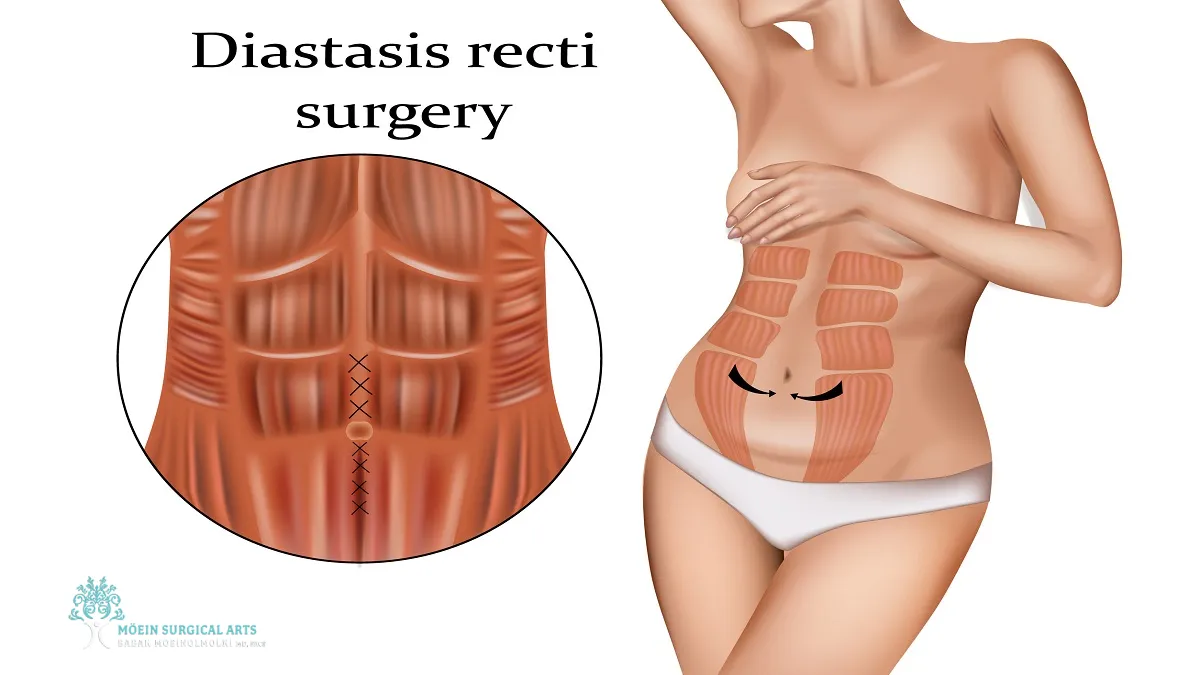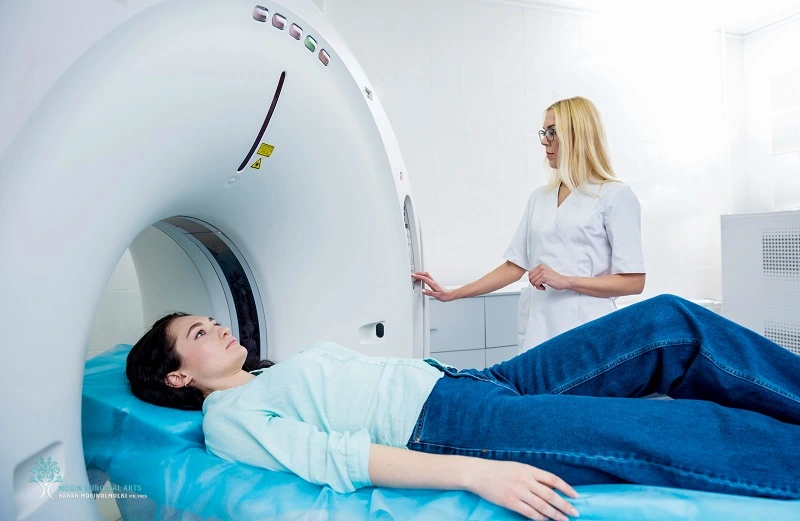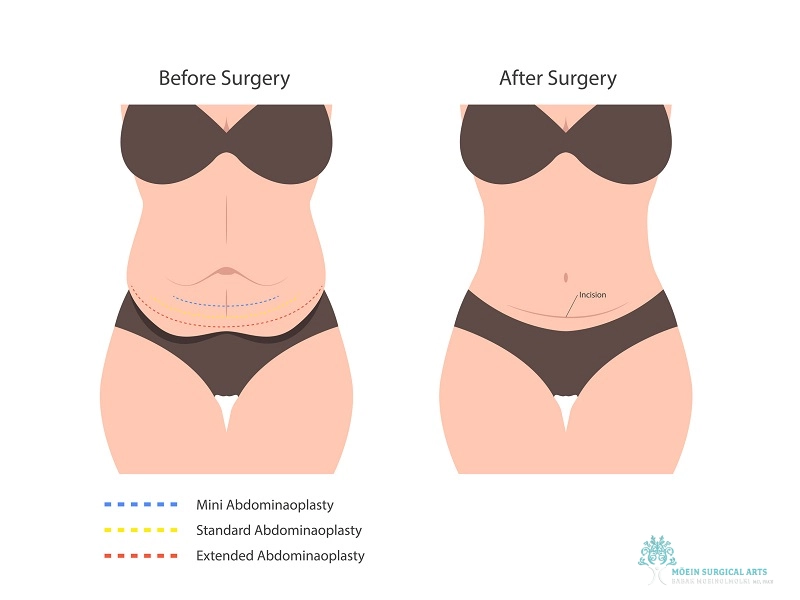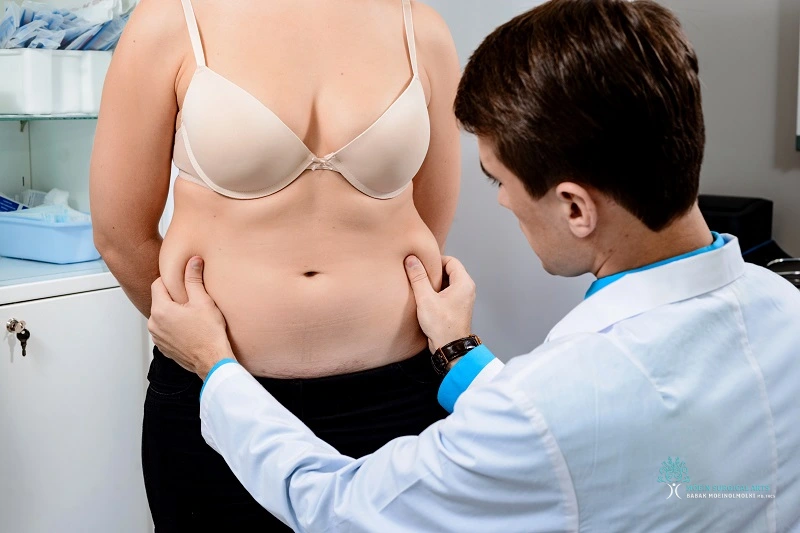
Diastasis Recti may sound like a complex medical term, but in simple words, it means your abdominal muscles have separated. These are the same muscles that form the “six-pack”, the rectus abdominis. Usually, they’re held together by a strong band of tissue called the linea alba. But sometimes, that band stretches and pulls apart, leaving a visible bulge or gap in your belly.

Diastasis Recti is a separation of the abdominal muscles along the midline. It’s not a tear, but a thinning and widening of the connective tissue. This condition is especially common in:
Think of it like this:
Your core is a soda can. When the pressure inside gets too high, the sides bulge. Diastasis is similar to a bulge; it’s the result of excessive internal pressure pushing out on weak spots.
Here’s what many people experience:
Real-life example:
“I had my last child 4 years ago, but I still looked 4 months pregnant. I didn’t know it was a real medical issue until my doctor checked my core. It turned out to be diastasis recti.”
Ignoring it can lead to:
At Moein Surgical Arts, we take this condition seriously. Because your core is your body’s center of strength. If it’s compromised, everything else suffers from mobility to mood.
So, you’re noticing a weird bulge in your belly, or maybe your core just feels… off. You’re thinking, “Could this be Diastasis Recti?” Good instinct! Early diagnosis can make a world of difference.
Step-by-step self-check:
If you feel a gap or soft spot between the muscles, that could be diastasis recti. You might also feel your fingers sink into your belly more than usual. If you can fit two or more fingers in that gap, it’s worth looking into further.

During your consultation, a physical exam usually reveals a lot. But to get precise measurements or check for related issues like hernias, imaging may be needed.
Common tools include:
When to See a Specialist:
If your self-check shows a gap, or if you’re dealing with these issues:
…it’s time to consult a specialist.
So, you’ve done the workouts. You’ve worn the binder. You’ve been to physical therapy. And yet… the bulge in your belly just won’t go away. At this point, you’re not lazy, you’re just dealing with a structural problem that requires a structural fix.
This is where surgery comes in.
A mini tummy tuck is ideal for patients with:
This procedure focuses on the lower abdominal area (below the belly button). Dr. Moein makes a small, discreet incision and tightens the abdominal wall using internal sutures.
Benefits of a mini tummy tuck:
Limitations:
Think of this as the “light version” of abdominal surgery, great for moms or athletes with mild to moderate diastasis who still want cosmetic improvement.

This is the most comprehensive option and the gold standard for moderate to severe diastasis recti.
During a full abdominoplasty, Dr. Moein:
It’s not just cosmetic, it’s structural repair.
Patients often say they feel “stronger from the inside out” after this procedure. That’s because it restores core integrity, eliminates sagging, and improves posture and stability.
Best for:
Recovery takes several weeks, but the results are life-changing, not only in how you look, but also in how you move and feel.
For patients who want less invasive surgery or those who don’t have cosmetic concerns, laparoscopic repair may be an option.
What’s involved:
This option has less downtime, minimal scarring, and can be combined with hernia repair if needed.
However, it may not be suitable if:
Laparoscopic surgery is typically chosen for function over form, and often covered by insurance if related to a hernia or medical necessity.
Diastasis recti often coexists with hernias, especially around the belly button (umbilical hernia) or along the midline (ventral hernia). Dr. Moein frequently performs combined procedures to treat both conditions in a single surgery.
How it works:
This dual approach:
If you’ve been told you have a hernia and diastasis, this combined treatment is often the most efficient and effective solution.
Your ideal treatment depends on:
That’s why every patient at Moein Surgical Arts receives a customized surgical plan.
We don’t believe in one-size-fits-all. We believe in transformational results that last.
The total cost of surgery varies depending on:
On average, diastasis recti repair surgery at a private practice in Los Angeles ranges between $8,000 and $15,000.
If your surgery includes cosmetic goals like skin tightening, liposuction, or belly button repositioning, that may influence pricing.
Dr. Moein provides a custom quote during your consultation, so you know exactly what to expect based on your unique needs.
Great question, and the answer is… maybe.
Here’s the breakdown:
Insurance may cover diastasis recti repair if:
Insurance won’t cover it if:
This is why many patients opt for combined procedures, such as hernia repair and abdominoplasty, to maximize both insurance and cosmetic benefits.
Dr. Moein and his team can assist you with:
Still unsure? Schedule a consultation to determine what may be covered in your case.
Congratulations on completing your journey through consultation, surgery, and recovery. Now it’s time to enjoy the benefits of your new body. Fixing diastasis recti is about more than just appearances; it’s about reclaiming your confidence and improving your quality of life.
Long-Term Results
Once healed, patients often report:
Many realize how significantly diastasis recti affected their lives only after it’s resolved, making everyday activities much easier and more enjoyable.
Post-Recovery Exercise Timeline
You can engage in activities like Pilates, yoga, weightlifting, and cardio, all while enhancing your core strength thanks to restored muscle function.
Emotional and Mental Benefits
Beyond the physical, many patients experience profound emotional changes such as increased confidence, pride in their bodies, and motivation for a healthier lifestyle. This procedure serves as a mental reset, especially for new moms or those feeling disconnected from their core.
Maintaining Your Results
To maintain your improvements, consider the following:
Regular follow-ups with Dr. Moein can help ensure your results last a lifetime when supported by healthy habits.

If your abdominal separation is larger than 2.5–3 finger widths, or if physical therapy hasn’t resolved symptoms like bulging, back pain, or weakness after 3–6 months, surgery may be the most effective solution. A consultation with Dr. Moein will help determine your specific needs.
Please feel free to call 310-455-8020 or fill out our secure contact form to book your consultation. During the visit, Dr. Moein will evaluate your condition, discuss your goals, and outline your personalized treatment plan.